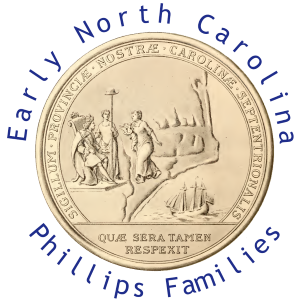Gaston County, North Carolina
From ENC Phillips Group Wiki
| Gaston County | |

| |
Founded December 21, 1846
web = http://www.co.gaston.nc.us | |
| Website {{{web}}} | |
Gaston County is a county located just west of Charlotte (Mecklenburg County) in the southern Piedmont in the U.S. state of North Carolina. It is the second largest county, by population, in the Charlotte Metropolitan Area, officially designated the Charlotte-Gastonia-Concord Metropolitan Statistical Area (MSA). As of 2000, the population was 190,365.
The county seat of Gaston County is Gastonia.Template:GR Dallas served as the original county seat from 1846 until 1911.
Contents
History
The earliest European settlers of Gaston County were principally Scots Irish, Pennsylvania Dutch, and English. In the 1750s, Dutch settler James Kuykendall and others constructed the Fort at the Point at the junction of the Catawba and South Fork Rivers.[1] The fort was built because of ongoing hostilities with the Cherokee, but it was apparently never attacked. Tensions between the settlers and the Native American inhabitants (primarily of the Catawba tribe) were eased considerably when the boundary dispute between North Carolina and South Carolina was settled in 1772, after which most of the Catawba settled on a reservation near Fort Mill, South Carolina.[2]
Most early farms were small, cultivated primarily by White yeoman farmers of English ancestry. North Carolina's colonial policy restricted the size of land grants, and in Gaston County they tended to be about Template:Convert each. One of the earliest grants in the area was given to Captain Samuel Cobrin, commander of a local militia company, on September 29, 1750.[3]
Between 1845 and 1848, Gaston County experienced an industrial boom. During this three-year period, the first three cotton mills in the County were established. Some authorities say that the first one was established by Thomas R. Tate on Mountain Island, near the present site of Duke Energy's Mountain Island Dam and Hydroelectric Station. Other sources say that the first mill was established by the Linebergers and others on the South Fork River near McAdenville. Most sources agree that among the first three mills in operation in the County was the Stowesville Mill, founded by Jasper Stowe and Associates in the South Point Community south of Belmont. Gaston County still leads all other counties in the country both in the number of spindles in operation and in the number of bales of cotton consumed.[2]
German influence
German pioneers began settling Gaston County in the mid 18th century and establishing homesteads after migrating southward from the Shenandoah Valley and beyond, via the Great Wagon Road. German settlers established themselves in clusters of independent farmsteads linked by extended family connections and by participation in Lutheran, Reformed, or German Baptist (Dunker) congregations.
By 1790 it is estimated 10 to 30 percent of the greater Piedmont population of North Carolina was of German origin, and modern-day Gaston County had an even higher concentration. Outnumbered by English and Scots-Irish neighbors, the Germans were perceived as a distinct group, and many of them strove to maintain German culture and ways. The use of the German language continued well into the 19th century, with a period of transition from German to bilingual, with predominant English usage established between 1825 and 1850. In the late 18th century, German dominated in many churches and families; by the 1835, sermons in Reformed and Lutheran congregations were often preached in both languages. By the late 19th century, German all but disappeared.Template:Citation needed
Similar patterns appeared in architecture. Traditional German construction methods-often the work of artisans trained in the fatherland-usually prevailed from the 1750s through the 1780s. The successive decades until the 1820s saw a blending of Germanic traditions and mainstream stylistic developments. Finally, from the 1820s to the Civil War, as popular national ideals homogenized much of the American culture, German descended families acceded to these trends.
Adjacent counties
- Lincoln County, North Carolina - north
- Mecklenburg County, North Carolina - east
- York County, South Carolina - south
- Cleveland County, North Carolina - west

|
Lincoln County | 
| ||
| Cleveland County | Mecklenburg County | |||
| York County, South Carolina |
Communities
- Belmont
- Bessemer City
- Cherryville
- Cramerton
- Dallas
- Dellview (inactive; smallest municipality in state)
- Gastonia
- High Shoals
- Kings Mountain (part also in Cleveland County)
- Lowell
- McAdenville
- Mount Holly
- Ranlo
- Spencer Mountain
- Stanley
Unincorporated communities
- Alexis
- Ashebrook Park
- Brown Town
- Crowders
- Hardins
- Lucia
- Mountain Island
- South Gastonia (CDP)
- Springdale
- Tryon - near site of former Tryon County courthouse
Towns and Cities
Gaston County has 14 incorporated towns: Belmont, Bessemer City, Cherryville, Cramerton, Dallas, Dellview (smallest incorporated town in the U.S. with a population of 23), Gastonia, High Shoals, Lowell, McAdenville, Mount Holly, Ranlo, Spencer Mountain, and Stanley. Inincorporated areas of the county are divided among six townships (used on an administrative basis only): Cherryville, Dallas, Riverbend, Crowders Mountain, Gastonia, and South Point.
Townships
References
<reference/>
External links
- Gaston County government official website
- Gaston County Schools official website
- Gaston Regional Chamber of Commerce
| This page uses content from the English language Wikipedia adapted for use as a quick research reference on this wiki. The original content was here: Gaston County, North Carolina. The list of authors can be seen in the page history. As with the ENC Phillips Group Wiki, the content of Wikipedia is available under the Creative Commons License. |
- ↑ Piper Peters Aheron. Images of America: Gastonia and Gaston County North Carolina. Arcadia Publishing, 2001 (ISBN 0738506737)
- ↑ 2.0 2.1 County Profile - http://www.co.gaston.nc.us/countyprofile.htm. Gaston County government official website. Retrieved on 2008-07-02.
- ↑ Robert F. Cope and Hanley Wade Wellman, The County of Gaston: Two Centuries of a North Carolina Region (Gaston County Historical Society, 1961), 13, cited in Peter Hoyle House National Register Application

